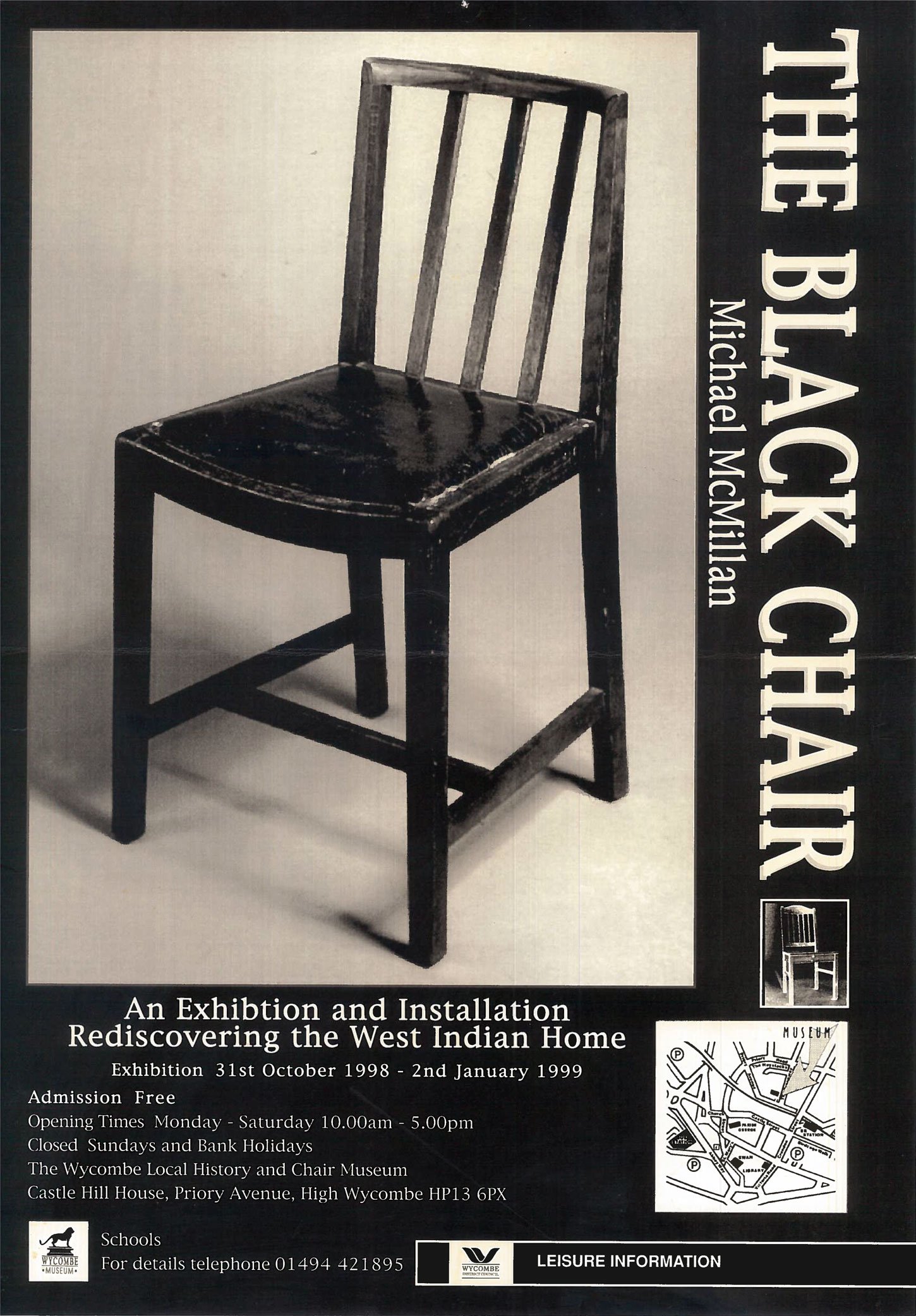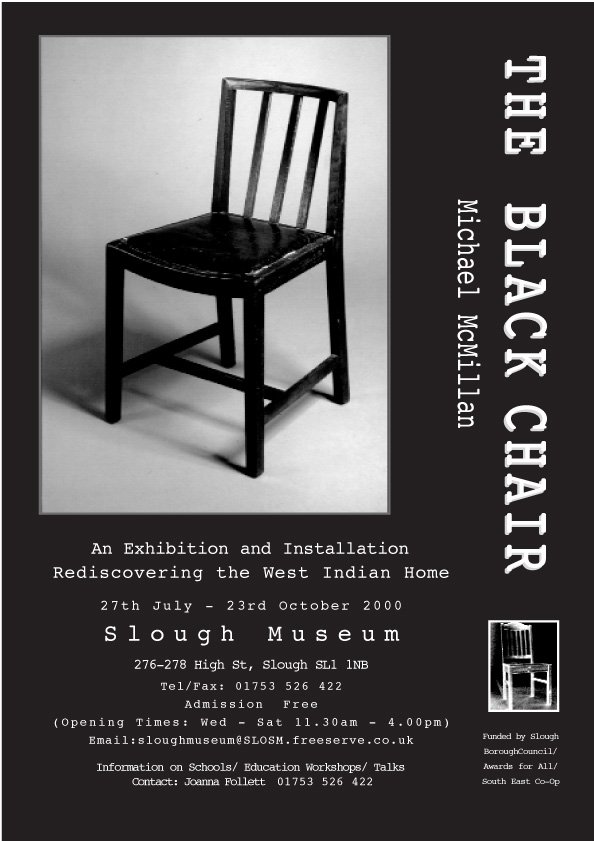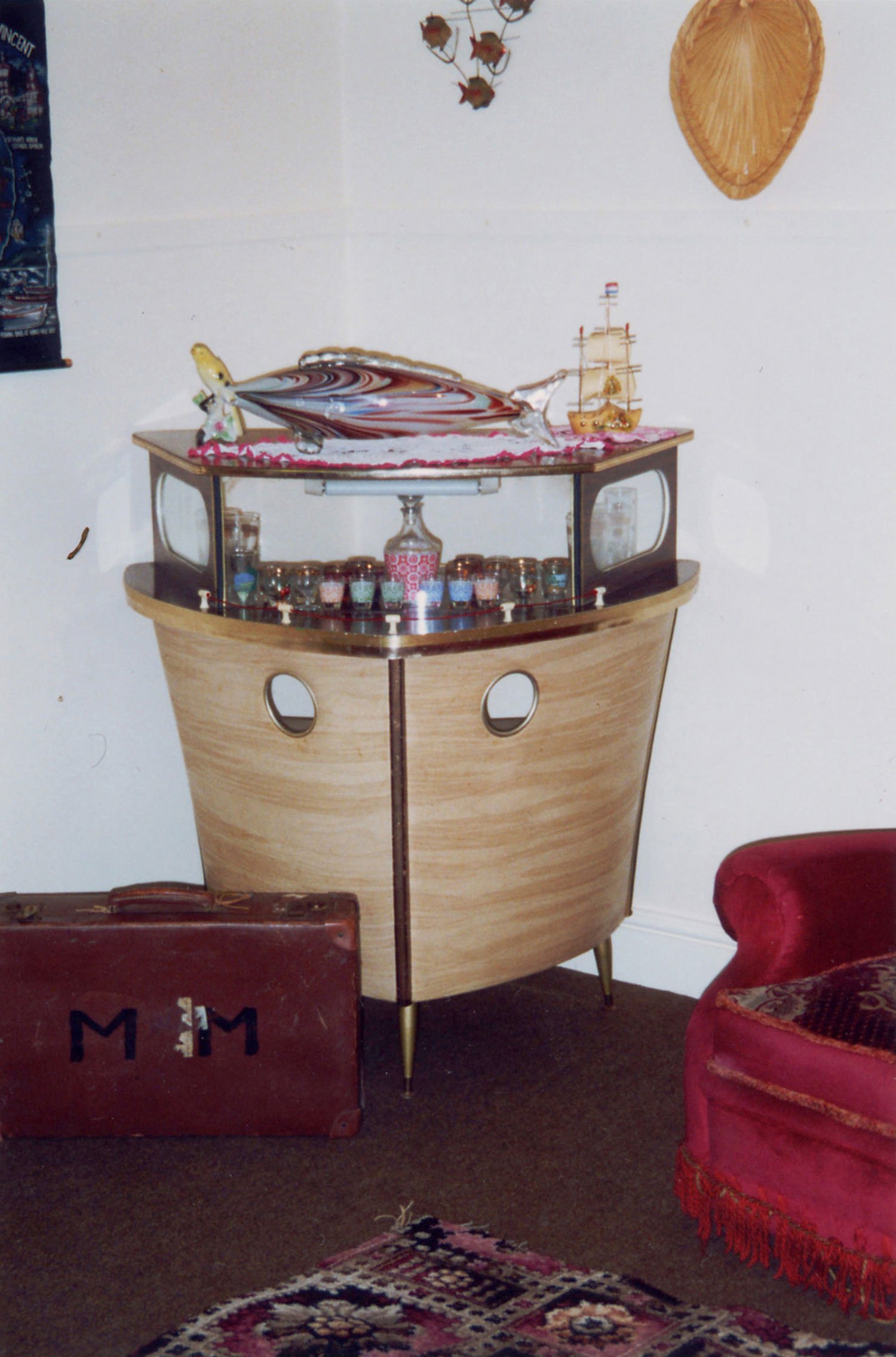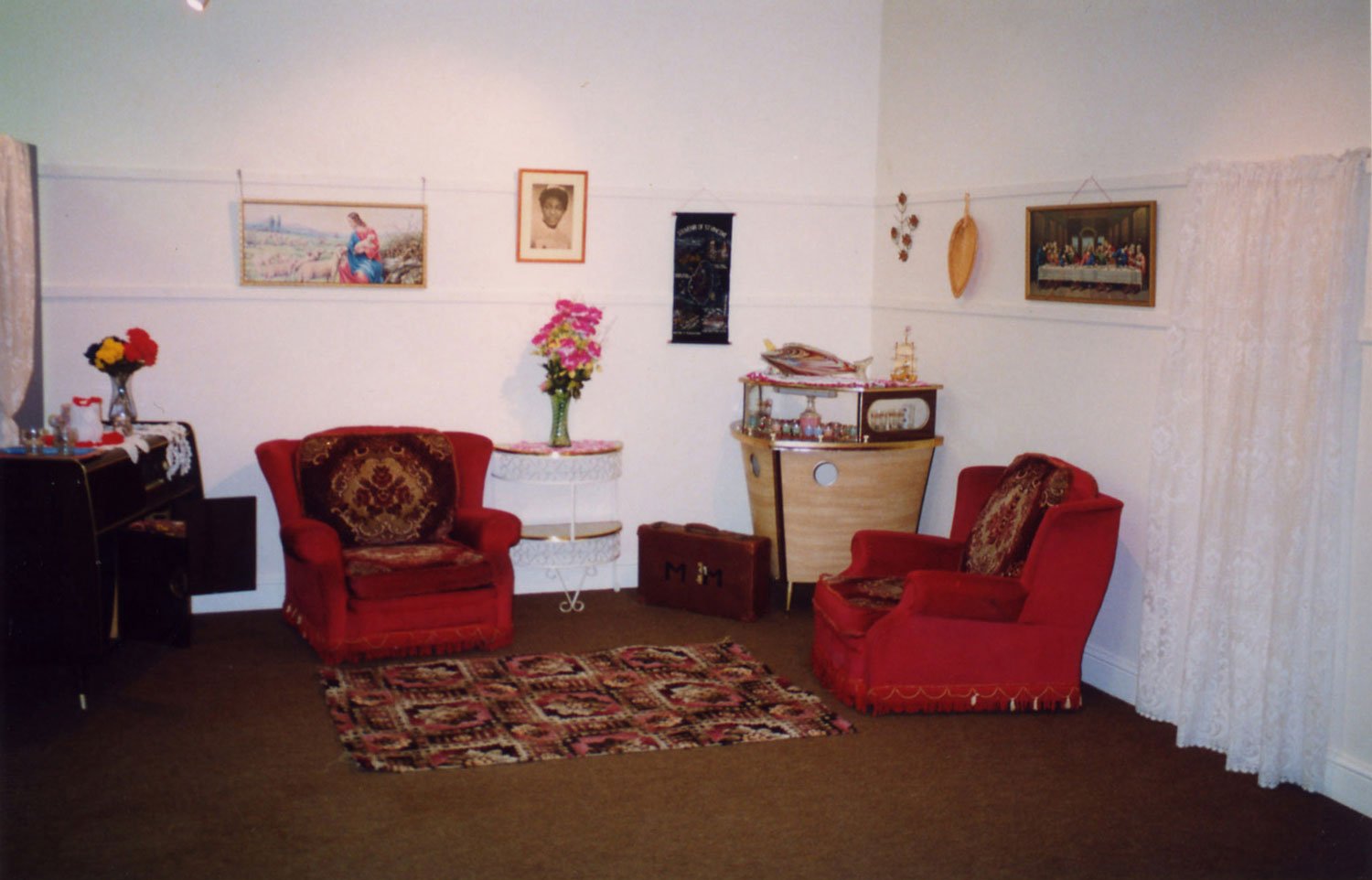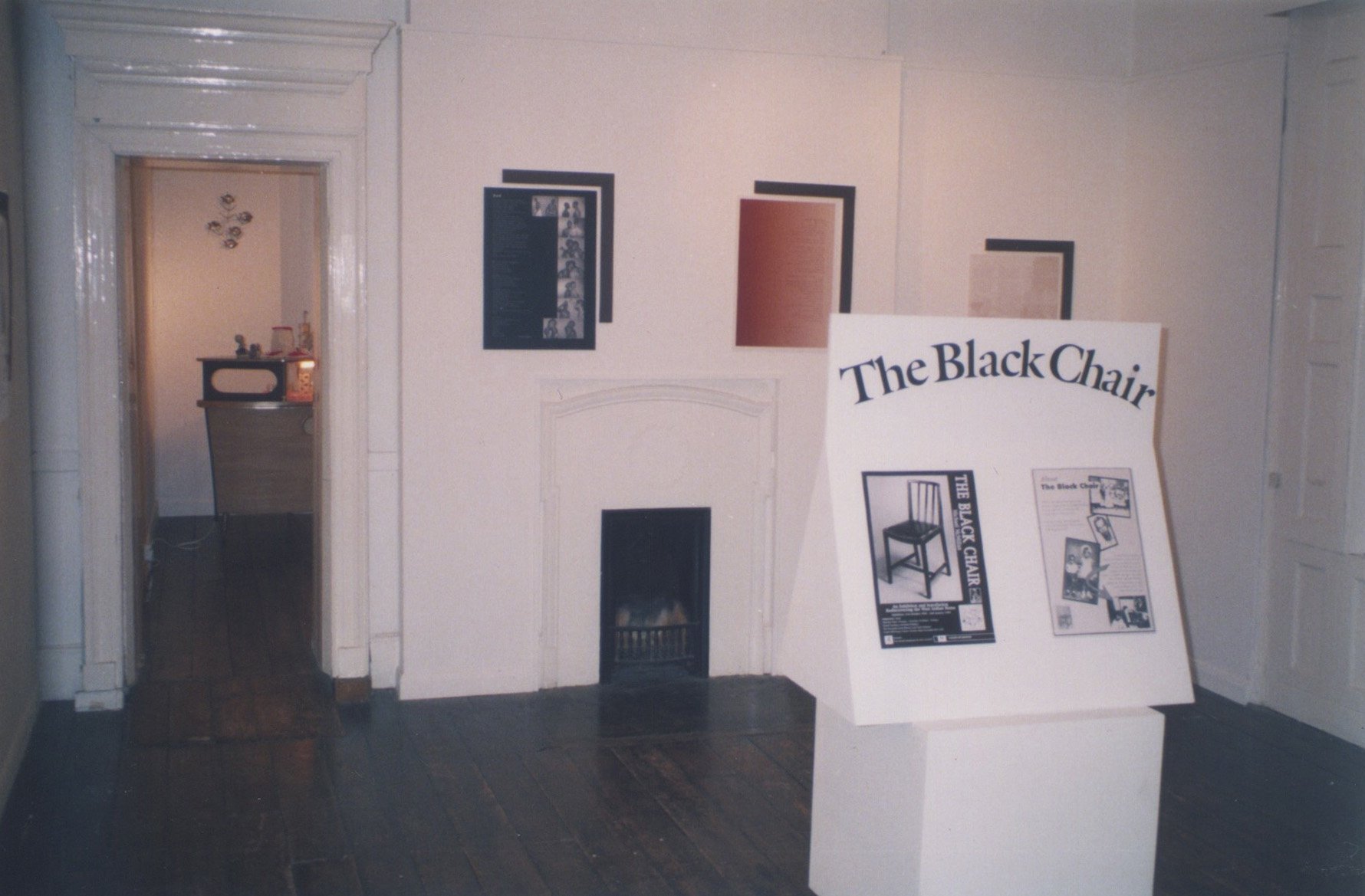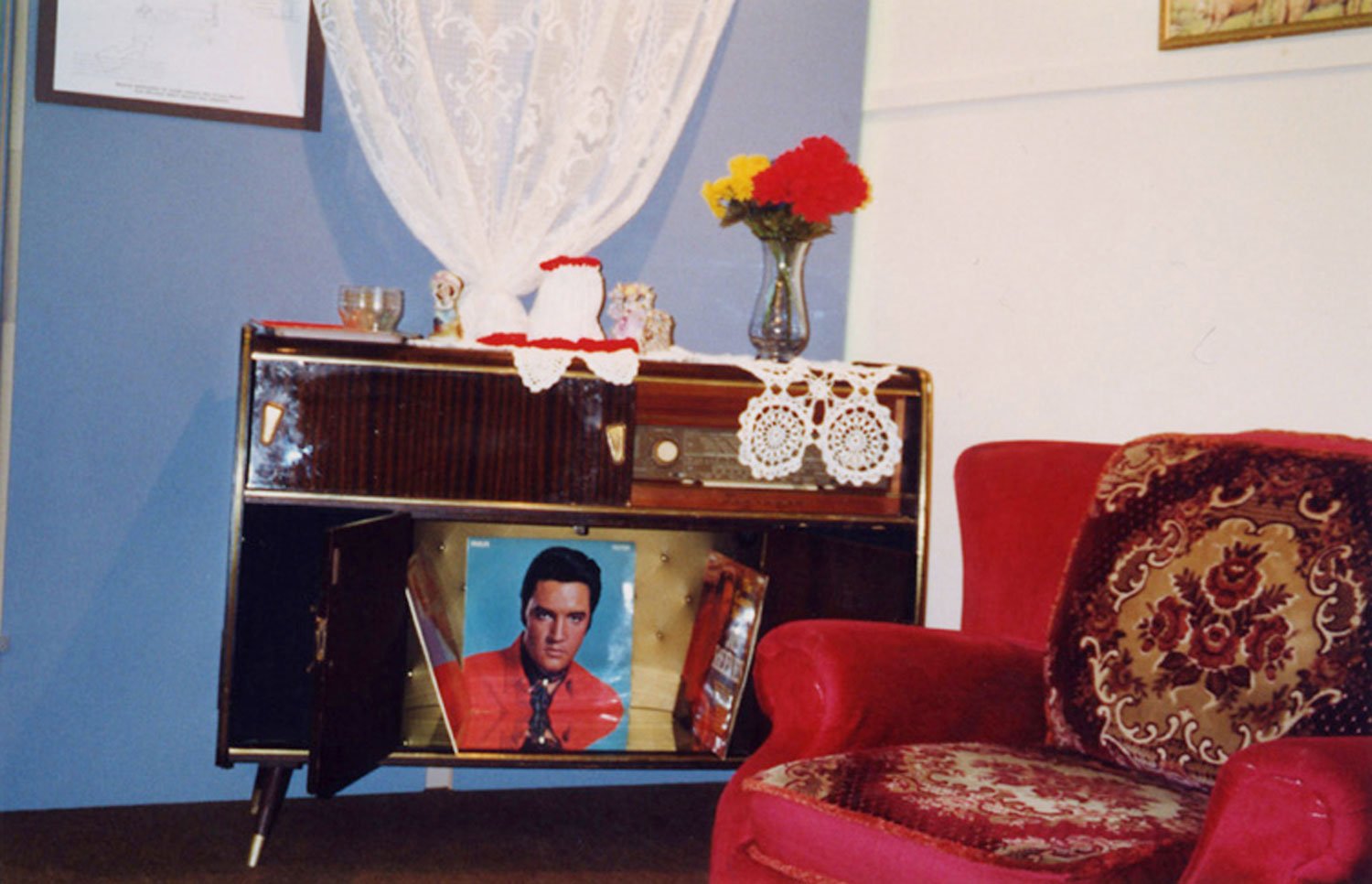The Black Chair: Rediscovering the West Indian Front Room
When we were called ‘coloured’, I am that boy in short pants, who grew up learning that ‘Cleanliness is next to godliness’ and that no matter how poor we were, if the front room looked good, then we were respectable. See here Saturday when the whole house is ritually cleaned, especially the front room; ‘hoovered’ (Vacuum cleaned), dusted and polished with Mr Sheen. I follow my mum to Ridley Road Market (Dalston, Hackney) with the trolley in tow, for provisions and ingredients for the ‘Saturday Soup’ (a cook-up soup made with meat or fish, and ground provisions like yam, dashen, dumplings and green bananas and vegetables), and Sunday dinner for visiting guests. Smell the air freshener and furniture polish masking the toxic smell of the paraffin heater as the big people, belly full, retire to the front room for big people chat with Jim Reeves crackling from the radiogram.
As children, we weren’t allowed into this hallowed space, but my mum invites me in to meet a relative who I had never met before, and tells me how big I had got. They continue chatting ‘commess’ (gossip in Eastern Caribbean vernacular) about who and who dead or who have ‘sugar’ (diabetes in Caribbean vernacular), and my mum instructs me to get her two gold rimmed glasses from the glass cabinet that only displayed things we didn’t use. I wheel over the drinks trolley, and she pours two glasses of Stone’s Ginger Wine with ice from the plastic pineapple ice bucket. I sit down obediently on the sofa with the plastic-covering sticking to my skin. Bored, I gaze at a blue-eyed Jesus in The Last Supper on floral patterned wallpaper next to a picture with a half-naked Tina, who flirts with me. I notice a fly fooled by the plastic flowers and colourful iron-starched crochet on a fake marble coffee table, then I overhear, ‘I don’t know why she marry him’. My mum realising I am there, asks me if I have any homework to do. From her look, I know this is not a question, but an instruction to leave. Michael McMillan 2022
Both McMillan’s parents come from St Vincent & the Grenadines, and he was born in High Wycombe, the unofficial capital of the Vincentian diaspora in the UK. His family eventually left for London, but he later returned to do a year-long writer’s residency, and interviewed Caribbean elders for the anthology The Black Boy Pub & Other Stories: The Black experience in High Wycombe (Wycombe District Council, 1997). It was a de ja vu moment: the living rooms where the interviews took place all looked the same. Love or hate it, McMillan realised that front room was part of him, and therefore worth exploring creatively. The opportunity came when the Wycombe Local History & Chair Museum invited me curate an exhibition, but had no money. Necessity being the mother of invention, McMillan borrowed his mum’s crochet and ornaments and late Auntie Lorna’s upholstered three-piece suite, glass cabinet, radiogram and a picture of The Last Supper. These materials formed the basis of a rudimentary installation and small exhibition entitled The Black Chair: Rediscovering The West Indian Front Room at Wycombe Local History & Chair Museum (1999). It resonated with audiences, and subsequently toured to the Slough Museum (2000).
